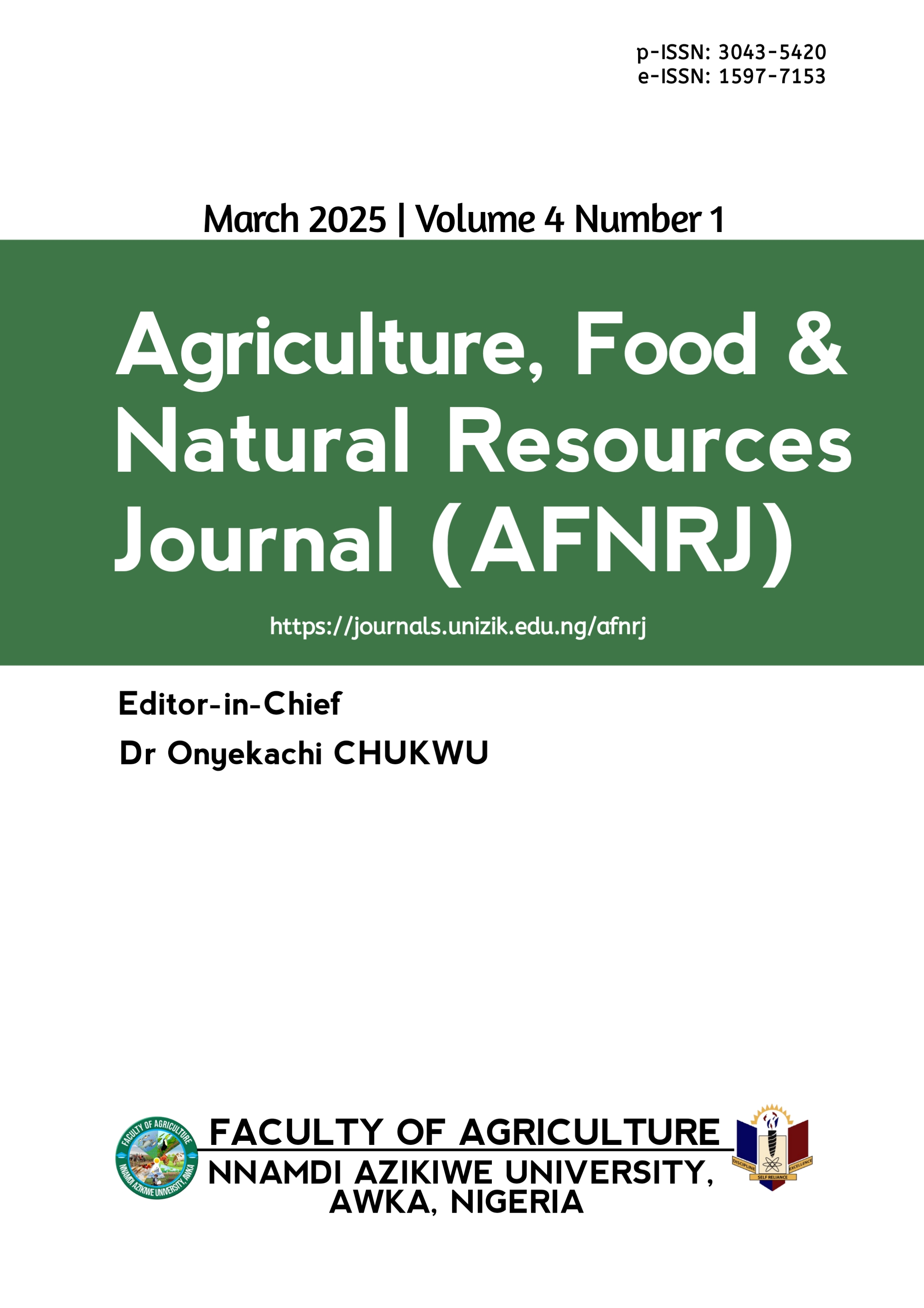Evaluation of selected Nigerian wood species treated with creosote and Occimum gratissimum Linn. extract against fungal infestation
DOI:
https://doi.org/10.5281/zenodo.15227669Keywords:
Celtis zenkeri, Preservation, Preservatives, Pterocarpus soyauxiiAbstract
The study focuses on the resistance of Pterocarpus soyauxii and Celtis zenkeri treated with creosote and Occimum gratissimum against fungal infestation. Wood samples were obtained from a sawmill and processed into 30mm × 30mm × 70mm in three replicates and dried at a temperature of 103±20°C for 8 hours and soaked in 500 ml of Occimum gratissimum and creosote for 24 hours. Absorption, retention, and visual assessment tests were carried out. Data were subjected to descriptive statistics using a two-sample T-test to test for significant difference. Pterocarpus soyauxii had the highest percentage moisture content of 17.85% among other wood samples that were tested, followed by Celtis zenkeri. Pterocarpus soyauxii had a higher absorption rate, ranging from 52.17% to 54.69% for the two treatment methods. Celtis zenkeri had the least absorption rate when treated with creosote (42.35%). The result proved that there is an interaction effect between the treatment and wood species. Creosote had the highest retention rate of 50.92 kg/m³. There is a significant difference between the wood species and the treatment methods. Celtis zenkeri had the least retention rate of 39.23 kg/m³ (Occimum gratissimum). The extent of protection varied with different treatment methods. Findings show that creosote is more effective in treating wood than Occimum gratissimum. Extension education should be increased towards educating wood users on the importance of organic preservatives as wood preservatives.
Downloads
Published
Issue
Section
License

This work is licensed under a Creative Commons Attribution 4.0 International License.
which permits unrestricted use, distribution, and reproduction in any medium, provided the original author and source are credited.
Authors retain the copyright of their published work in the AFNRJ.





